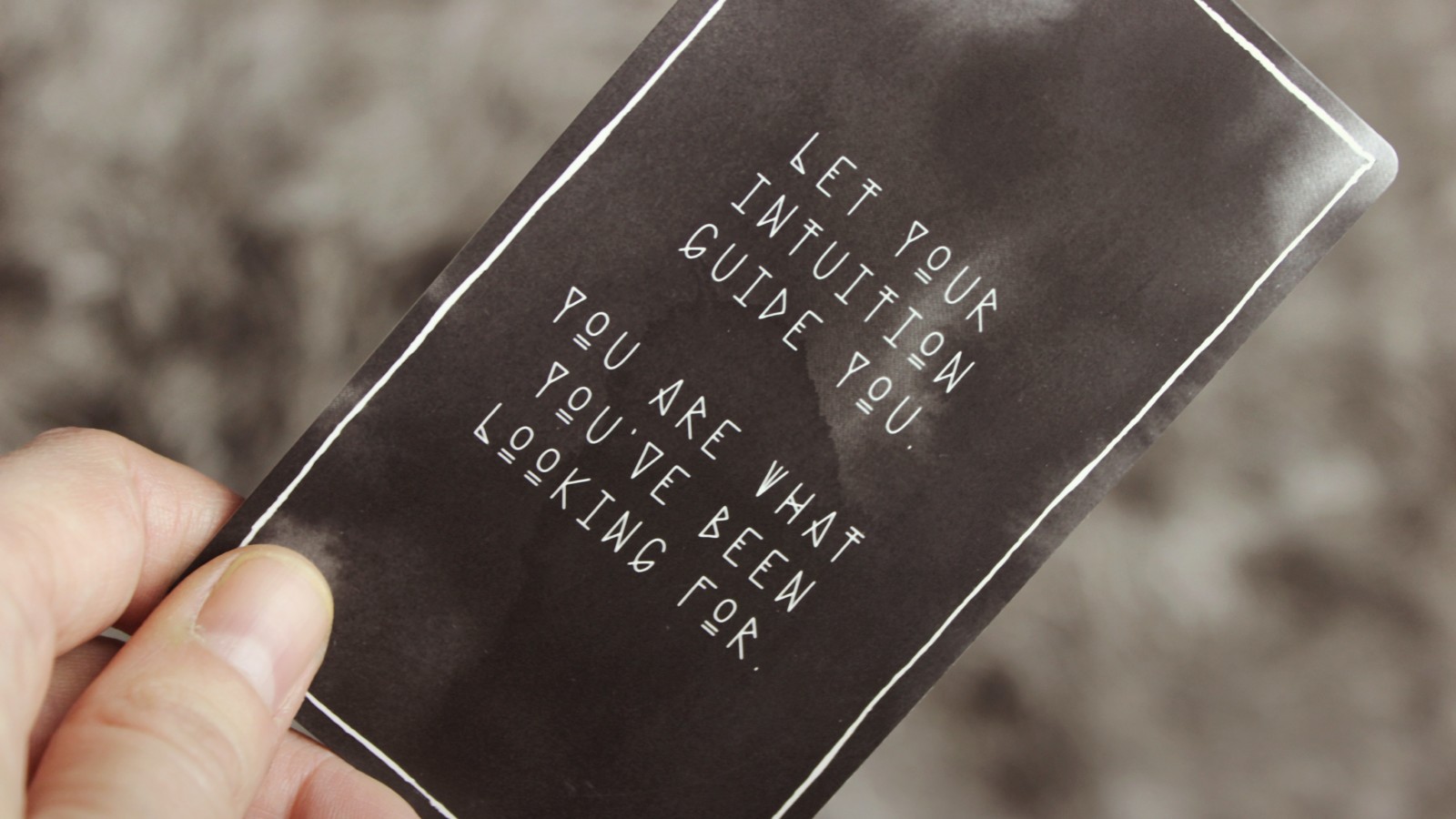Recent research has shown that going with our intuition, or gut instincts, helps us make accurate decisions. Many successful leaders acknowledge that their intuition has helped them through the most challenging times of their careers. Being intuitive means that we can make wise decisions without using our analytical minds.
Intuition is sometimes thought of as the sixth sense. Thus, it’s an inner knowing that does not involve the mind, or intellectual or logical processes. It’s when we feel something instinctually. When we have an intuitive feeling, we’re receiving ideas without knowing where they’re coming from.
What Does It Mean to Follow Your Intuition?
Following your intuition means that you’re listening to your inner voice, which can be a huge tool in the decision-making process. A study done by Lufityanto, Donkin, and Pearson at the University of South Wales (2016) found that nonconscious emotional information can boost the accuracy of decision-making while also increasing an individual’s sense of confidence. In addition, it was found to speed up the actual decision-making process.
This is fascinating information and confirmation that trusting our inner voices and intuition can be a positive action. The researchers suggest that this was the first time a study has shown that intuition actually exists.
Inner Knowing
According to transpersonal psychologist Frances Vaughan (1998), intuitive awareness falls into four main categories: physical, emotional, mental, and spiritual, which we can use independently of one another.
An example of inner knowing as it pertains to the physical self might be when we’re in an unsafe or uncomfortable situation and we feel a sensation in our body, whether it’s a headache, stomachache, or a sense of anxiety. This points to a form of intuition that offers a message: “Learning to trust your bodily responses is part of learning to trust your intuition” (p. 186). If your body is giving you information, then it’s a good idea to listen because the information can ensure your safety. If you habitually have the same response to the same situation, it might have to do with a preexisting (perhaps childhood) trauma. Being mindful of this reaction will allow you to cope.
An example of emotional inner knowing is when you feel that someone’s energy or vibes are either positive or negative. Most often, this will affect your behavior when you engage with them. Often there’s no particular reason for how you feel; it’s just felt at an instinctual level. Moving forward, these feelings can provide you with valuable information.
Mental inner knowing, according to Vaughan, pertains to awareness accessed through images or “inner vision.” You might see patterns in a situation that was previously chaotic. This sort of inner knowing or intuition is sometimes referred to as “having a gut feeling.”
Spiritual inner knowing or soul guidance might be associated with mystical experiences. Experts have suggested that regular meditation practice can foster and enhance this type of intuition.
In his book You Are Psychic! (1989), Pete A. Sanders says that “psychic abilities” can be tapped into using the “psychic reception areas.” He identifies four different psychic senses in the body: psychic feeling (in the solar plexus), psychic intuition (knowing or inner awareness), psychic hearing (on both sides of the head above the ears), and psychic vision (the third eye or the spot between the eyebrows). In the same way that some of us are auditory or visual learners, we each have strengths in one of these psychic areas. Sanders says that in order to face challenges and make good decisions, it’s important to learn your own psychic strength because it can affect how you live your life. Also, when you know the psychic strengths of your loved ones, you can communicate with them more effectively.
How to Tap into Your Intuition
- Begin a regular meditation and mindfulness practice. Meditation will help you tap into your subconscious mind and is a powerful way to awaken your intuitive powers.
- Maintain a regular journaling practice. Journaling is a wonderful way to tap into your intuition. For example, try to think about a recent situation you’d like more insight about. Focus on that event and pay attention to the thoughts that emerge. In your journal, write down what comes to you. As you go about your day, observe others, and see if you can pick up any information from their body language even before they speak with you. It’s all about “tuning in.” When you have the opportunity, jot down your observations.
- Practice creative visualization: Shatki Gawain wrote two seminal books on the subject—Creative Visualization and Developing Intuition, which work hand in hand. Creative visualization is a technique where you close your eyes and use your imagination to create what you want in your life. It can open you up to new creative energies that will help you tap into your intuition.
Begin with a few minutes of diaphragm breathing. Then, let go of any thoughts that enter your mind, and imagine them fading away. Picture yourself in a cave where you remove all your clothes and lie down. Feel the moisture dripping from the ceiling, as its acidic nature begins to dissolve your skin, organs, and body systems. Think of yourself as a skeleton, while being completely aware. Being stripped of everything can offer a magical opening into your intuitive self and may also help you tap into your inner voice.
References
Lufityanto, G., C. Donkin, and J. Pearson. (2016). “Measuring Intuition: Nonconscious Emotional Information Boosts Decision Accuracy and Confidence. Psychological Science Online.
Sanders, P. A. (1989). You Are Psychic!. New York, NY: Simon & Schuster.
The Association for Psychological Science Newsletter (2016). “Intuition: It’s More Than a Feeling.” April 21.
Vaughan, F. (1998). “Mental, Emotional, and Body-Based Intuition.” In Inner Knowing, by H. Palmer, Ed. New York, NY: Jeremy Tarcher.
–Originally Published in Psychology Today, June 30, 2021


